Impact of Early Agriculture in Mesopotamia
0 Comments
The Significance of Early Agriculture in Ancient Egypt
Origin of AgricultureThere are two theories which try to explain the origin of Agriculture. These are the independent and the diffusion theory. The independent theory suggests that Agriculture as an activity developed independently throughout the world as local conditions dictated. The diffusion theory states that agriculture started in the Middle East, i.e., in Mesopotamia from where it spread to other regions in the world. The origin of agriculture has long been a subject of study and debate among researchers. Two main theories have emerged to explain how agriculture originated: the independent theory and the diffusion theory.
Both theories have their merits and limitations. The independent theory highlights the ingenuity and adaptability of early human societies, showcasing how they independently discovered agriculture in response to local conditions. On the other hand, the diffusion theory emphasizes the interconnectedness of early human populations and the transfer of knowledge and practices between different cultures. It is important to note that the origin of agriculture is a complex and multifaceted process that likely involved a combination of factors, including environmental changes, population growth, technological innovations, and cultural interactions. Researchers continue to investigate and refine these theories, seeking to uncover more insights into the fascinating development of agriculture in human history. COMMON QUESTIONS ON DEVELOPMENT OF AGRICULTURE TOPIC
Suggested ActivityHold a class debate on the topic: Solutions to Food Shortage in the Third World is to be found in the Third World itself.
Solutions to Food ShortagesLand Reclamation
This is the turning of potential land that is otherwise wasted into productive use. This can be done through irrigation in arid lands, draining swampy places or clearing bushes.
In places where this has been attempted new land has been availed for cultivation leading to increased food production, e.g., Mwea Tabere Irrigation Scheme in Kenya as seen in figure 3.15 and desert reclamation in Libya, and the Gezira Scheme in Sudan.
Agricultural Policies
The agricultural policies should be reformulated from a concentration on cash crops to pay more attention to food production. New policies should also promote inter-dependence between agriculture and industry.
Provision of Extension Services
This refers to services such as advice, research, information dissemination, storage and preservation of farm produce especially food. Extension services are vital for the development of agriculture. These should be improved and the extension staff should be well equipped and kept conversant with all developments in their fields, so as to pass on this information to the farmers.
Family Land Use
This is the way families use available land through government policies and incentives like subsidies. Families should be encouraged to have at least a sizeable portion of their land under food crops. This would lead to self-sufficiency for the households, which could eventually contribute to national food self-sufficiency.
Research and Development
There should be an increased emphasis on research and development. Research can lead to the use and production of more efficient fertilisers, pesticides, and equipment and machinery.
Infrastructural Development
Infrastructure refers to the development in transport, communication, storage, marketing, banking and credit facilities. These should be improved to link the farming areas with towns which provide market for the produce, machinery and inputs.
Reforestation Programmes
The aspect of planting more trees may influence the pattern of rainfall especially where unplanned and wanton destruction of trees has taken place. This will check desertification.
Environmental Conservation Measures
This relates to the conservation and protection of water-catchment areas. The building of gabions and terraces to check soil erosion and the proper utilisation of land can lead to an increase in food production like strip cultivation.
Effects of Food Shortage in Africa and the Rest of the Third WorldHigh Mortality rates
There is bound to be an increase in death rates due to starvation of the people. This is caused by drought which makes it impossible for people and their animals to find food hence widespread famine.
Increase in Poverty levels
There is bound to be a general increase in poverty among the masses. This will in turn increase the rate of crime, e.g. robbery with violence.
Economic Decline
Countries that face food shortages will in turn experience economic decline. People who can not find food will not take part in other economic activities, but only dedicate their energies in search of food.
Erosion of National Prestige
Countries that experience food shortages are constantly depending on foreign aid and grants. These may lead to overdependence on outside assistance which makes the countries not to stand on their own. The above situation can result into neo-colonialism.
High Debt Burden
The countries that receive food aid to solve their food shortage problem may have high debt burden. This is because all they generate in terms of revenue goes towards food and not servicing their foreign debts. This is common in Third World countries.
Increase in Insecurity and Political Instability
Food shortages may result in insecurity as people who do not have will resort to violence and criminal activities in order to get the badly needed food.
Decrease in Population Growth Rate
The population growth rate will decrease due to high mortality rates and low birth rates. It should be noted that a hungry population can not reproduce as food is an essential element in human reproduction.
Damping Problem
Regions that have food shortages can easily become damping grounds for foodstuffs which are not consumed in developed countries. These are foods that may with time affect agricultural production of the regions.
For example, in 2003 Zimbabwe refused to accept genetically modified maize from America, as it was thought to have negative impacts on local agriculture.
Political Influence
People in countries that are affected with food shortages are bound to suffer if their governments use food aid as political tool against those who do not support them. Their democratic rights like choosing leaders of their choice will be curtailed.
Refugees Problems
There is bound to be movement of people from areas (countries) that are experiencing food problem. They become refugees in neighbouring countries or regions where they experience problems of misplaced people. They also cause problems to people they are living amongst such as pollution, insecurity and environmental destruction.
Spread of Diseases
Diseases that are related to food shortages are likely to break out and spread especially those that are nutritional in nature, for example, kwashiorkor, marasmus and stunted growth.
The desperation may also make people be involved in immoral practices such as prostitution leading to the spread of HIV/ AIDS and other sexually transmitted infections.
The Food Situation in Africa and the Rest of the Third World
The Third World is the term used to refer to countries in Africa, Central and South America as well as part of Asia. These are also referred to as Developing Countries or Less Developed Countries (LDCs).
Most of them were colonised by Western European countries and their economies were determined by their former colonisers. Although they gained political independence, the economies of most of these countries have remained weak, while their food situation remains fragile.
Most of their attempts to attain self sufficiency in food production have been unsuccessful. This has led to serious food shortages and so they have had to get food aid from developed countries and international organisations like the World Food Programme (WFP).
Factors that have Contributed to the Shortage of Food in the Third WorldInappropriate Agricultural Policies
Greater attention has been paid to cash crops such as coffee, tea, cocoa, rubber, cotton and sugar-cane at the expense of food crops like maize, rice and wheat. This is a carry-over from the colonial period when cash crops from the colonies served as raw materials for the industries in the "home" countries.
Large tracts of land as well as a lot of resources have been devoted to these cash crops at the expense of food crops. This trend did not change at independence as these crops were and continue to be the main earners of foreign exchange.
Adverse Climatic Conditions
Most Third World countries lie within the tropics. Many of these countries experience climatic conditions characterised by little or no rain at all. It is in these areas that most deserts are found like Sahara and Kalahari deserts of Africa. The Sahel Belt of West Africa is another example.
Rapid Population Growth
The rate of population growth exceeds the rate of food production in most of these countries, leading to food shortages. This is further complicated by the fact that most of the population is wholly dependent and is not involved in food production due to their young age.
Insufficient Infrastructural Development
In most of these countries, infrastructural development in transport, communication, storage facilities and marketing is insufficient. Efforts by farmers to improve yields are often frustrated by this.
The poor transport and communication network in most Third World countries has hampered the investment in food production which requires immediate access to markets and storage facilities.
Labour Pattern
Rural-urban migration has increased labour shortage in the rural areas and negatively affected food production. A bias towards white collar jobs within the population is partly responsible for this drift.
In Africa, the HIV/AIDS scourge is seriously affecting the availability of labour for agriculture, as most of those infected are those that are economically active. This has made the aged and very young to assume the responsibility of working on the farms so as to feed the greater majority, a task they can hardly perform leading to low agricultural output.
Capital
Lack of capital to buy costly machinery, and fertilisers, and to practise modern agriculture has had adverse effects on food production.
Consequently, farmers in most Third World countries are still using traditional methods and tools like hoes and digging sticks which limit the area that can be cultivated. This limits the yields.
Human Activities
Destructive human activities like cutting down trees expose the soil. These coupled with overgrazing have led to soil erosion, landslides and a decline in soil fertility. These have lowered food production.
Pests and Diseases
These have rendered many potentially productive areas useless. Such areas include those infested with tsetse flies, and locusts. Pests such as the grain borer, locusts and the army worms have destroyed large quantities of food crops in the Third World countries.
Poor Processing Facilities
The processing facilities in many of these countries are poorly equipped and are therefore inefficient. Many of the processing firms do not pay the farmers that provide the raw materials promptly, a situation that has discouraged the farmers from seeking ways and means of improving production.
Natural Calamities
Many countries in the Third World suffer from various natural calamities such as floods and droughts. These destroy farmland and lowers crop yields.
Political Instability
Political instability in several Third World countries has diverted attention from food production. Many countries in Africa have experienced war and so they have relied on food imports. Many have been rendered as refugees hence dependant on food aid.
The Declining Production of Indigenous Crops
The production of disease and drought- resistant indigenous crops like cassava, yams, sorghum and millet has declined. Farmers have opted for crops such as maize, wheat and rice without paying attention to their suitability for the area.
Overdependence on Donations and Foreign Aid
This has greatly affected investment in agriculture as more of these donations from external donors like the World Bank are used in cash crop than in food crop production.
Consequently, the economic programmes of Third World countries are altered to suit these donors. This has also led to a situation where Third World countries have heavy annual debt repayments that leave inadequate finances for the agricultural sector.
Poor Implementation of Policies
Many Third World countries lack the commitment to implement the plans and policies on food production that they design.
The Agrarian Revolution in the United States of America
The United States of America is in North America which covers the USA, Canada and Mexico. It is home to many popular crops including maize, potatoes, tobacco and pineapples, among others. These were cultivated by the indigenous American communities, the Red Indians.
From the 16th century Europeans from different parts of Europe migrated to North America to escape religious and political persecution. These early settlers founded various colonics on the east coast of America and learnt to cultivate the indigenous crops from the native Americans.
Following the Agrarian Revolution in Britain, agriculture in the USA developed due to influence from Britain. Factors that led to Agrarian Revolution in the USAImmigration
As a result of the enclosure system many poor people lost their land. Some of them moved to North America. They carried the new skills and knowledge that they had gathered from the Agrarian Revolution in Britain. They also took cattle, horses, sheep, pigs, fowl and seed, and improved them as they moved to the new world with a lot of enthusiasm and zeal to succeed.
Modern Farming
The agriculture that developed in the USA was originally a blend of the old and the new. The modern plantation and estate farming, the crop-zoning, the use of hybrid seeds and farm machinery, the teaching of agricultural economics and extension education, and the increased use of fertilisers transformed agriculture into a big industry.
Availability of Suitable Land
Due to its size, the USA covers several climatic zones and so a wide variety of crops can be grown and many different kinds of livestock can be kept. This coupled with the fact that the USA was a vast country inhabited by few people meant that there was a lot of land available for all kinds of agriculture.
This led to the creation of specialised agricultural zones. The most prominent zones are the cotton and corn belts, the wheat, the dairy, the range and livestock areas, and zones for crops like rice, potatoes, citrus fruits, etc. Large-scale agriculture in all these areas is practised.
Availability of Labour
With the development of plantation farming a lot of labour was required. Thus, from the 18th century many slaves were transported to the new world including the USA in the Trans Atlantic trade. These provided cheap labour especially in the cotton, sugar and tobacco belts.
Development of Machinery
The invention and use of new machinery was also a characteristic feature of the Agrarian Revolution in the USA as it was in Britain. John Deere invented the steel plough in 1831 as an improvement to the iron plough that was in common use.
Cyrus McCormic invented a reaper in the same year. Later on, American scientists developed the refrigerator which preserved food by keeping it at low temperatures. These methods of preserving food and improved transportation encouraged farming.
Government Policy
The American government supported the agricultural sector. In 1862 the Homestead Act was passed. This legalised individual land ownership. It also authorised the Federal Government to grant financial assistance and loans for the purchase and development of land. With the capital availed to them, many farmers turned to large-scale farming or ranching.
In later years the government granted subsidies to the farmers and introduced tariffs on imported agricultural produce. These measures were put in place to protect the farmers against competition from imported agricultural produce.
Infrastructural Development
The development in the transport and communication network in the USA especially the roads, railway and waterways enhanced and facilitated the advancement in agriculture. This made it possible for inputs to be transported quickly to the farms, and farm produce reach the market fast and in good condition.
USA crop zones
Large-scale farming/Estate farming Large plantations were established that initially used slave labour before the introduction of machinery.
Use of Fertilisers
To improve soil fertility, artificial fertilisers was used. Pest controls were invented that curbed spread of crop/animal diseases.
Effects of Agrarian Revolution in USA
The Agrarian Revolution in Britain
The Agrarian Revolution began in Britain. It was at its peak between 1750 and 1850. Agriculture was transformed from a simple and humble occupation to a complex and highly professional practice.
Factors that led to Agrarian Revolution in Britain
Growing Demand for Agricultural Produce
There was a big demand for food by the rapidly growing urban population and an even greater demand for agricultural raw materials for the many modern and improved textile and leather factories.
The Agrarian Revolution caused more fallow land to be cultivated.
Waste and moorland was reclaimed while increased irrigation saw food being grown all year round. Farmers then started using improved cultivation methods to produce more food from the land.
Farm Mechanisation
In 1701, one of the early British experimental farmers, Jethro Tull invented the first major farm implement called the seed drill. The seed drill made it possible for seed to be sown in rows, or drills. English farming was improved by the implement because the land between rows was kept clean and inter-row crop farming was made easier. Later, farm machinery was introduced for all sorts of farm work.
Jethro Tull also invented a horse-drawn hoe in the same year (1701) which replaced the harrow. With the use of this new machine, it was possible to keep the roots of plants moist and clear harmful weeds since it went deep into the ground.
Harvesting of crops which was a slow process and required many workers was also solved. Andrew Meikle invented a mechanical thresher in 1876 which speeded up the process. In the same way, from 1825, the iron plough effectively replaced the wooden plough. With machines for ploughing, threshing, harrowing and harvesting, the costly farm labour was minimised and wastage reduced and food production increased.
Breeding of Livestock
Meanwhile, another farmer, Robert Bakewell (1725-1795), had been experimenting on selective breeding for livestock. He developed animal husbandry and is credited for new improved livestock breeds such as the Shorthorn, Devon, Hereford, Aberdeen- Angus and Ayrshire. Some of the modern breeds of cattle.
Sheep breeds such as the Leicester, Shropshire, Suffolk and Oxford, and pigs such as Yorkshire, Berkshire and Tamworth were developed.
Crop Rotation
Turnips and clovers could be grown alternately on the same land. Clover was a cattle feed which also enriched the soil. Turnips, barley or oats, clover and wheat were now raised in a four-course rotation. Lord Townsend (1674-1738) who himself was an estate owner and renowned farmer popularised the rotation method.
Abolition of Fallows
The abolition of wasteful fallows increased land for cultivation.
Use of Fertilisers
Another improvement in agriculture in Britain followed Lord Townsend's recommendations that land should be manured to increase yield per hectare. Consequently, from 1835, Britain imported the phosphate-rich guano from Peru. Then in 1843, a superphosphate factory was opened in London by Sir John Lawes.
Enclosure system
Another feature of the Agrarian Revolution was fencing and hedging of plots which replaced open fields in 1750. In the same year, Government legislation was passed making it mandatory for farmers to fence their land. This legislation quickened the pace of hedging and fencing.
By the Nineteenth century, almost all the farmland in Britain had been enclosed. The enclosure system reduced the risk of either crops or livestock contracting diseases as was the case in the pen fields. Aggressive farmers could now increase production without the hindrance of their neighbours.
Land Consolidation
The small strips of land were consolidated together to give room for large-scale farming.
Scientific Methods of Food Preservation
The development of canning and refrigeration made it possible for farmers to preserve perishable foodstuffs in large quantities and for domestic use.
Industrial Revolution
The industrial revolution provided the agricultural sector with inputs and at the same time market for their produce.
Results of the Agrarian Revolution n Britain
Disadvantages of the Open-field System
Definition of AGRARIAN REVOLUTIONThe Agrarian Revolution was the radical change in methods of agriculture and livestock rearing. Characteristics of Agriculture in Europe before the Agrarian Revolution
Factors that led to Early Agriculture in Mesopotamia
Early Agriculture in Mesopotamia
One of the earliest areas in the world to develop farming was Mesopotamia. The name Mesopotamia means "the land between two rivers." These are the Tigris and Euphrates rivers. Mesopotamia was located in present day Iraq and the earliest evidence of early agriculture was in Jarmo in the Kurdish Hills,
The southern part of Mesopotamia known as Sumeria, was arid and received very little rain. The Sumerians began to improve the land by irrigating it. Initially they practised basin irrigation, where they allowed the rivers to flood the plain and deposit fertile silt on the land. Agriculture was thus practised on the silt. Later, canals were dug to channel water into the fields whereas dykes were constructed to prevent further flooding of the felds.
The Sumerians later invented the shadoof that was used to draw water from the rivers. The water was then poured into the canals and used to irrigate the fields, see figure 3.4. These inventions increased the area that was cultivated. They also invented clay vessels and woven baskets for the storage of their poduce.
By 5000 BC agriculture had become one of the most important economic activities in Mesopotamia. The people were mixed farmers who mainly grew grains like wheat and barley, but they also grew figs, flax, olives, vines and vegetables. In addition, they kept cattle, ducks, donkeys, goats, horses, geese, sheep and pigs.
Factors that led to Early Agriculture in Egypt
Early Agriculture in EgyptEgypt was the first country in Africa where techniques of food production spread. Agriculture in Egypt was practised along the banks of River Nile. The waters of the Nile deposited the silt that it had carried from the Ethiopian and East African highlands into Egypt. The early Egyptians drained the water that caused the silt to be swampy and this way created their earliest farms. Since Egypt was arid, they dug canals from the Nile to direct the water to their farms during the dry season. Thus canal irrigation replaced basin irrigation. This was followed by the invention of the shadoof. The shadoof invention consisted of a long pole that swung up and down between two supporting posts. A bucket was hung at one end and a heavy weight attached to the other end. The bucket would be filled with water from the river which was then poured into the canal. The use of the shadoof made two harvests in a year possible. The Egyptian farmers grew wheat, barley, beans, cucumbers, figs, lentils, onions, grapes, dates and flax. They were mixed farmers as they also reared cattle, sheep, goats, chicken, ducks, geese and bees. It is from Egypt that agriculture spread to the rest of Africa.
Factors for Domestication of Crops and AnimalsThere are a number of factors that made it necessary for human beings to discover agriculture. These were:
The Beginning of Crop GrowingAgriculture is the cultivation of crops to satisfy human needs. But popular use of agriculture now includes animal husbandry (keeping of animals) for products such as meat, milk, butter and eggs as well as bee- keeping and fish farming. The feeding of world population depends on agriculture. The type of agriculture practised in any region of the world depends on climate, availability of labour and other resources. On learning to produce food, man became even more settled.
The Beginning of Domestication of Animals
The development of domestication of animals had its origin in some of the regions of earliest civilisations. That was about 10,000 years ago.
Before man learnt to domesticate animals, he was purely a hunter using the dog which he had managed to tame. He moved from place to place in all sorts of weather looking for animals to kill and gathering fruits, roots and other items. As time passed, man learnt to domesticate animals, he could keep them for food when weather conditions were not conducive for venturing out. As a result some of the animals like cows and goats provided man with milk. He did not see the need to kill these animals immediately. Furthermore, more animals like the sheep and cat became tamed.
This attempt at taming meant that man had to feed them. The taming of animals made man have a more settled way of life because hunting was now limited. This was an important step to settlement, and some families could now live together in villages. Man also began wearing skins of the animals he had killed.
According to archaeological evidence, cattle, sheep and goats originated from South- West Asia. Greece, Crete, Algeria and Egypt are also credited with being the origin of cattle.
From North Africa cattle spread to central and southern Sahara. By 300 BC they had reached the area around Lake Turkana and had arrived in Southern Africa by 2000 BC The cat, guinea fowl and the ass were among the animals which originated from Africa.
Benefits of Domesticating Animals
Definition of AgricultureAgriculture is the growing of crops and the keeping of livestock. It is also called farming. The growing of crops is cultivation, while the keeping of livestock is pastoralism, or herding. This can also be referred to as animal husbandry and entails poultry keeping. In the course of the New Stone Age period, man's way of life changed from that of nomadic hunter-gatherer to sedentary agriculture. Domestication of animals and growing of crops became one of the most significant economic activities of man.
Early Agriculture in Africa
In Africa, agriculture first spread to Egypt along the Nile valley, where it was practiced as early as 700BC.
Featured Topics
Agrarian Revolution in Continental Europe
Reasons why farming in continental Europe was not as advanced as it was in Britain. Continental European countries learnt modern methods of farming from Britain. Initially, farming in continental Europe was not as advanced as it was in Britain because:
Early Agriculture in Asia and EuropePlaces associated with early agriculture in Asia.
Animals that were domesticated in Asia.
From mid 18th century onwards, scientific ideas and new techniques of farming were applied as a result of the scientific and industrial revolutions. The changes that marked the Agrarian Revolution in Britain. (What were the characteristics of the agrarian revolution in Britain?) 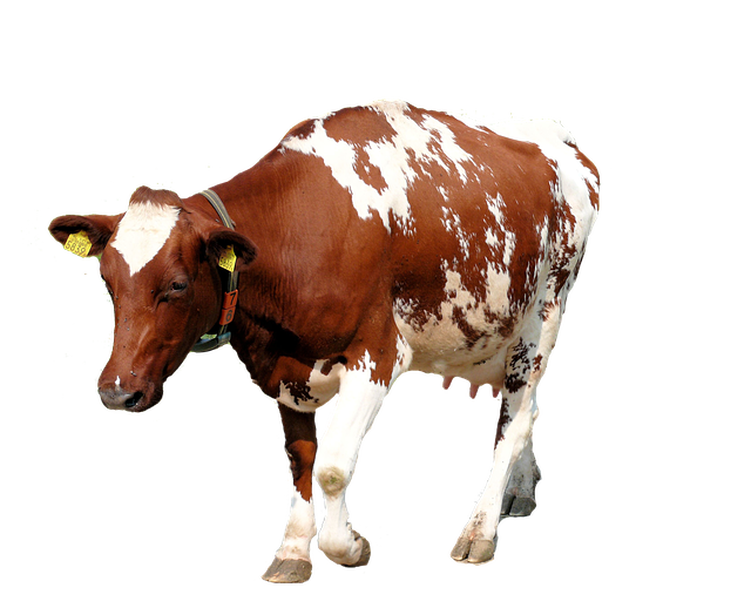
Describe the Open Field system as practiced by farmers in Western Europe before the 18th century (Explain farming in Britain as practiced under the Open Field system.)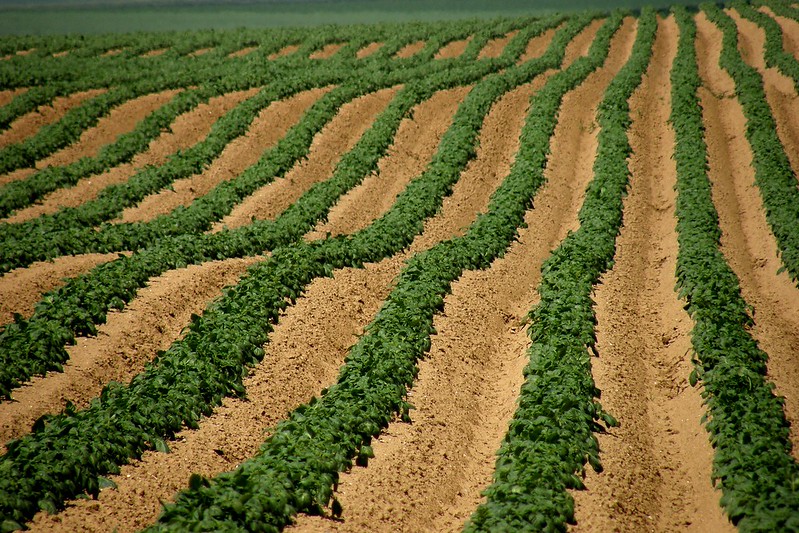
A piece of land was divided into three portions: one for growing corn and wheat, the second for beans, peas, barley, oats and bush wheat, while the third was left fallow to regain fertility. Sometimes, this third piece was left for grazing and homes.
Each portion of land was divided into several strips, depending on the number of peasants in a village. Each peasant had his own strip, on which he was meant to cultivate just enough for the needs of his family since agriculture had not yet been commercialized. Introduction to Agrarian RevolutionDescribe the characteristics of agriculture in Western Europe before the 18th century.
Agrarian revolution started with invention and use of machines from mid 18th century, when food production increased as the number of workers on the farm reduced. By the Neolithic period, agriculture had reached Europe, particularly Switzerland, Spain, Italy and Turkey, where rice and barley were mainly grown.
|
Archives
April 2024
Categories
All
|
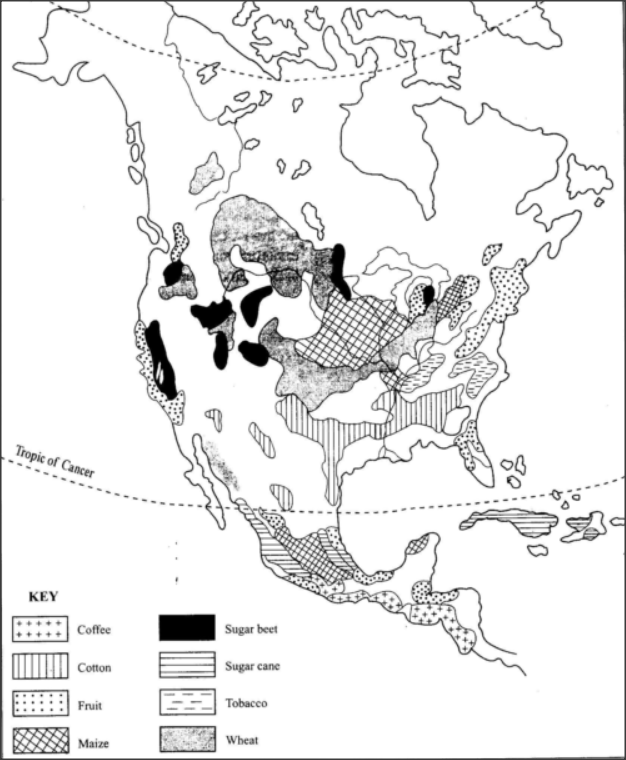
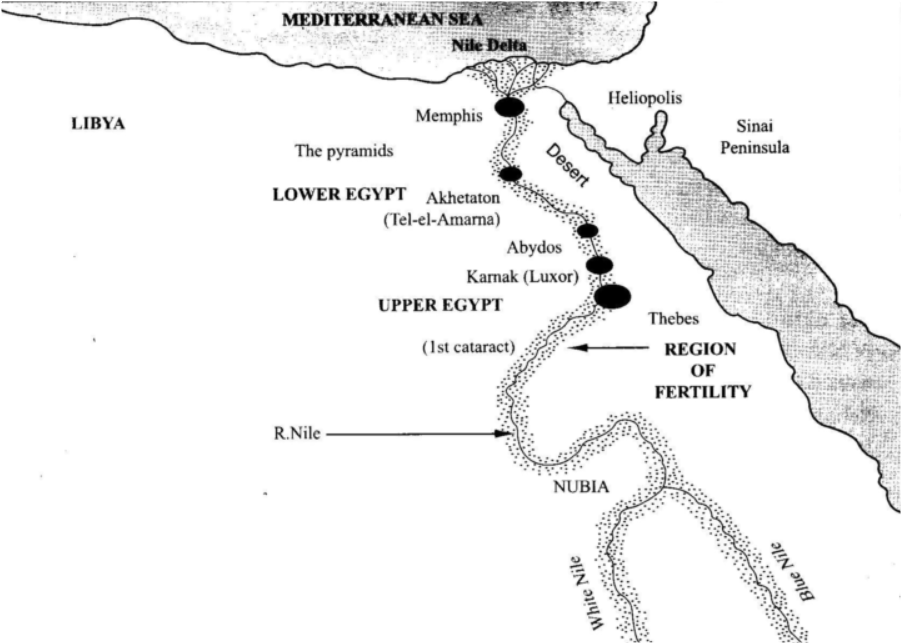
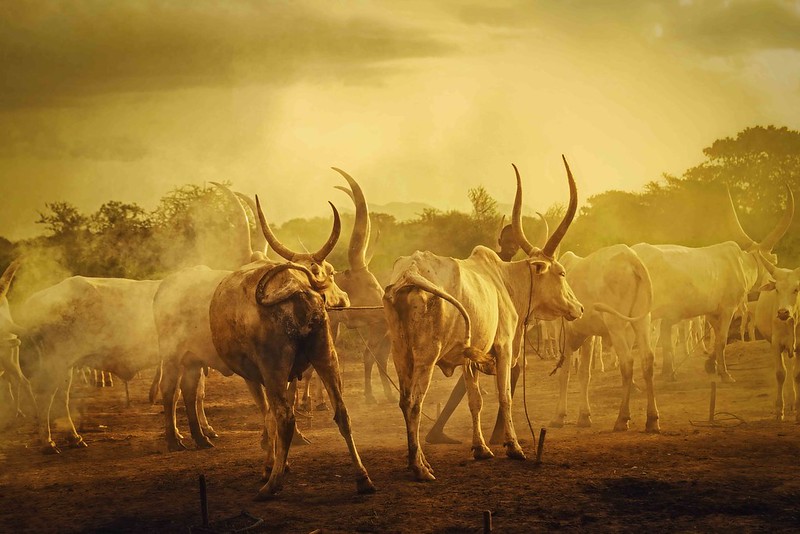
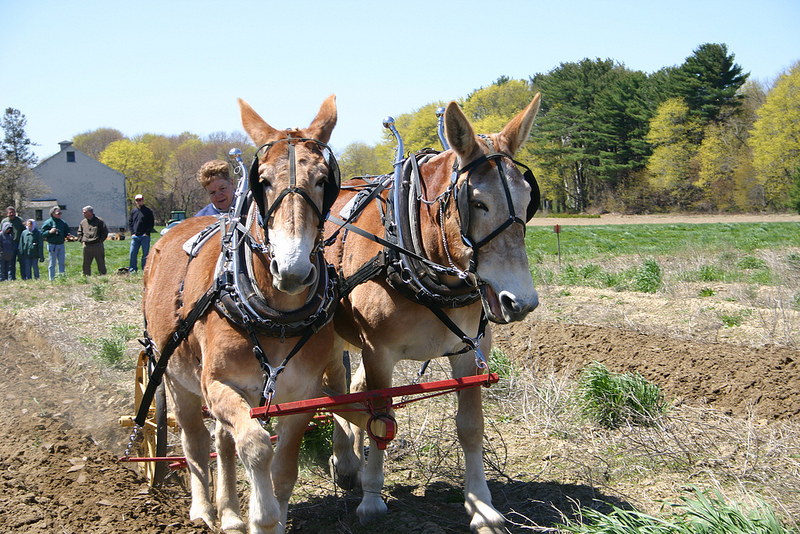
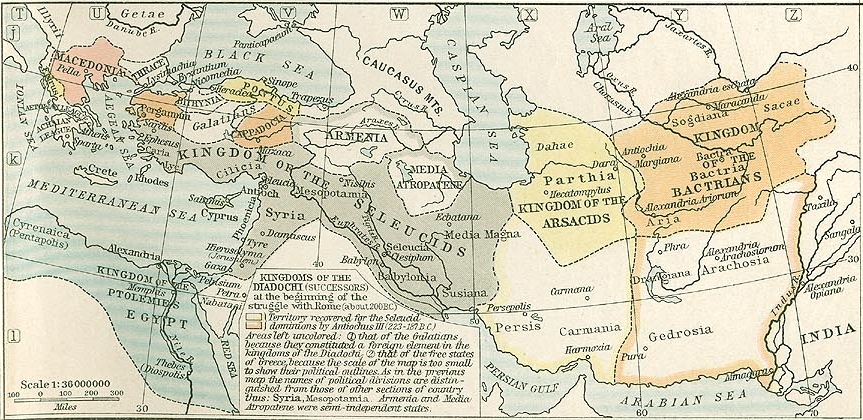

 RSS Feed
RSS Feed